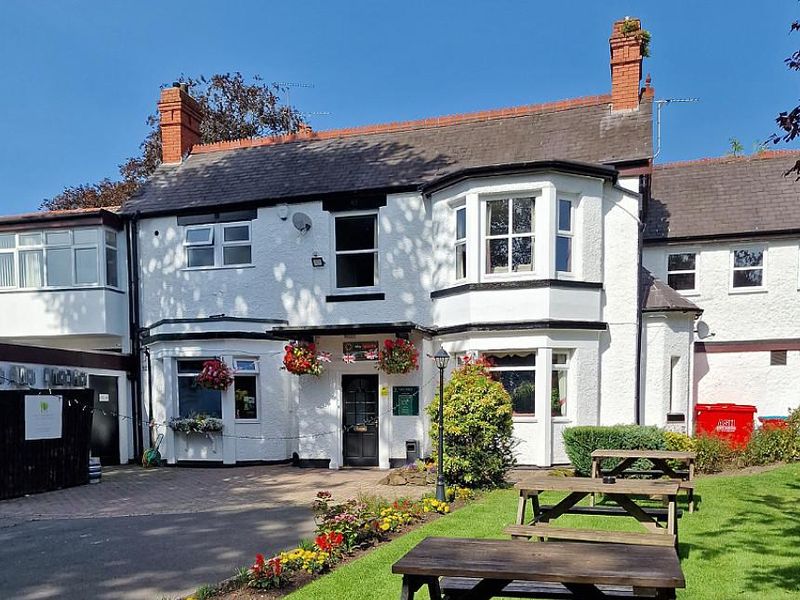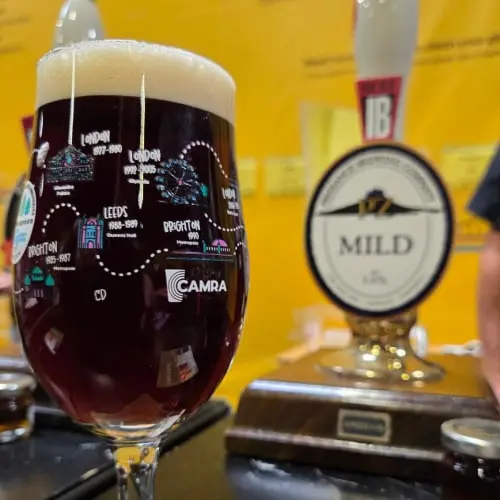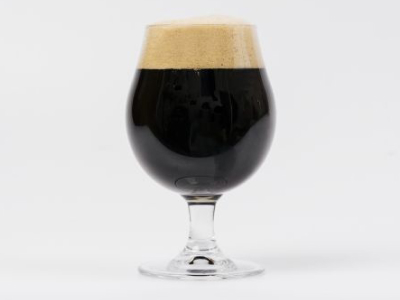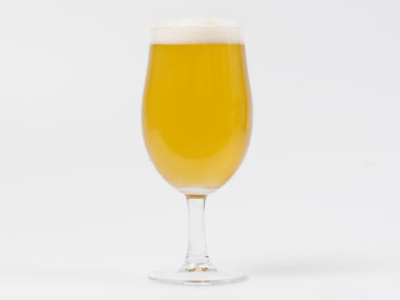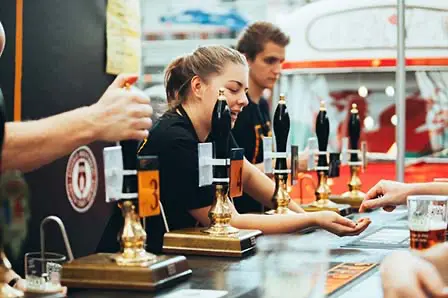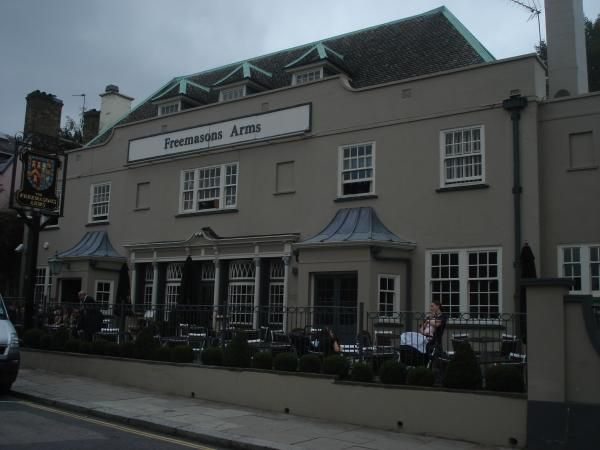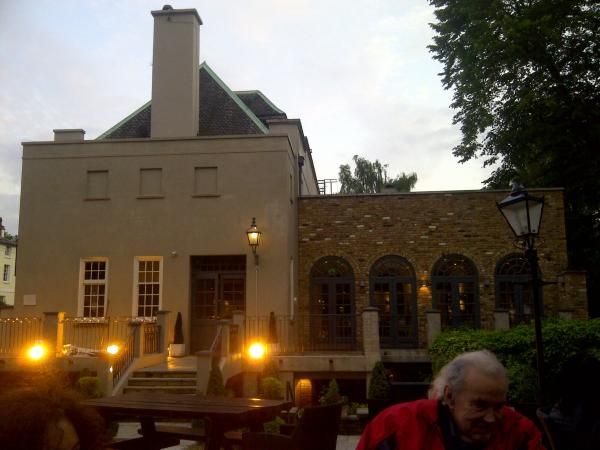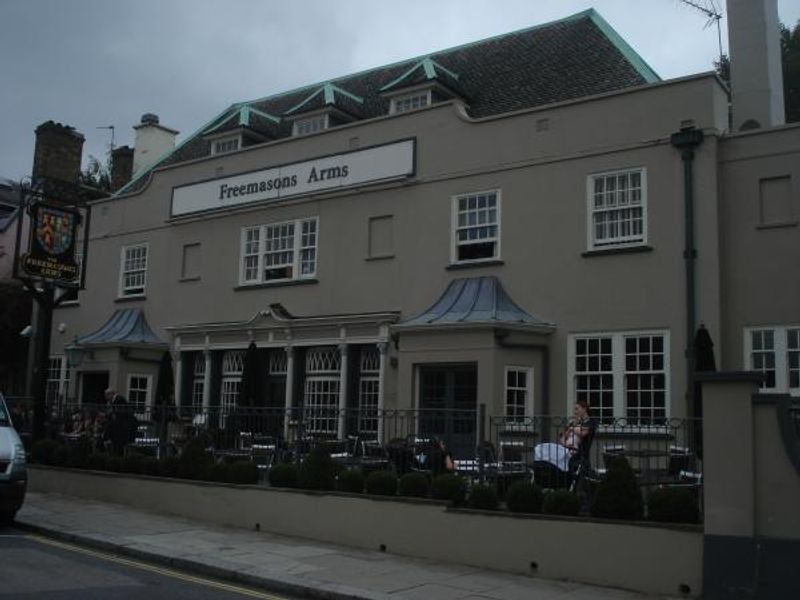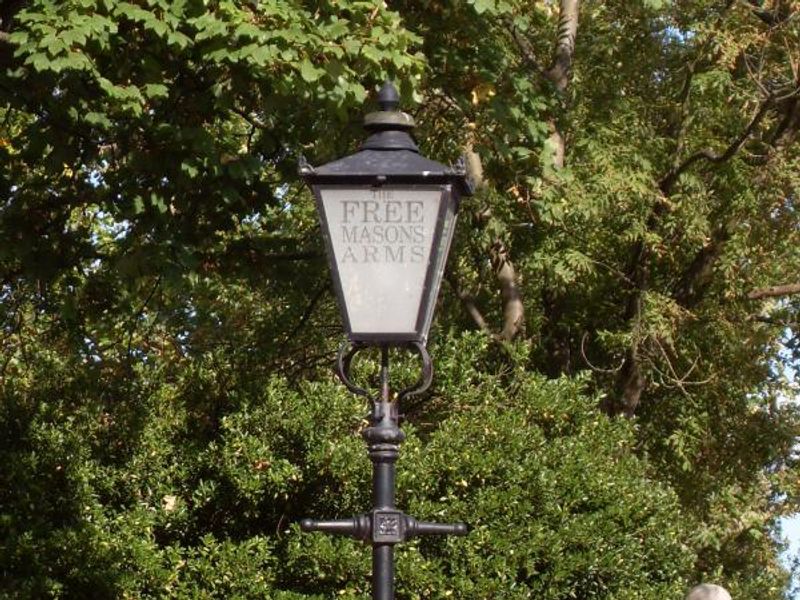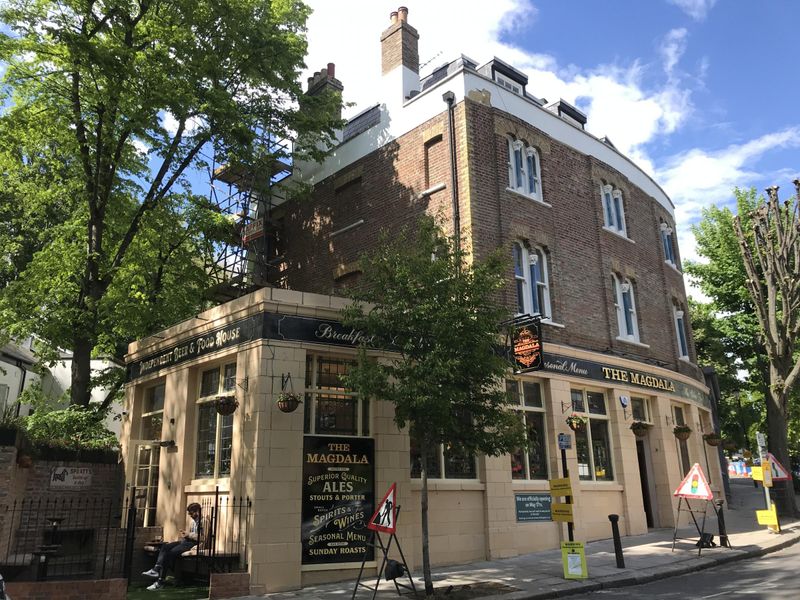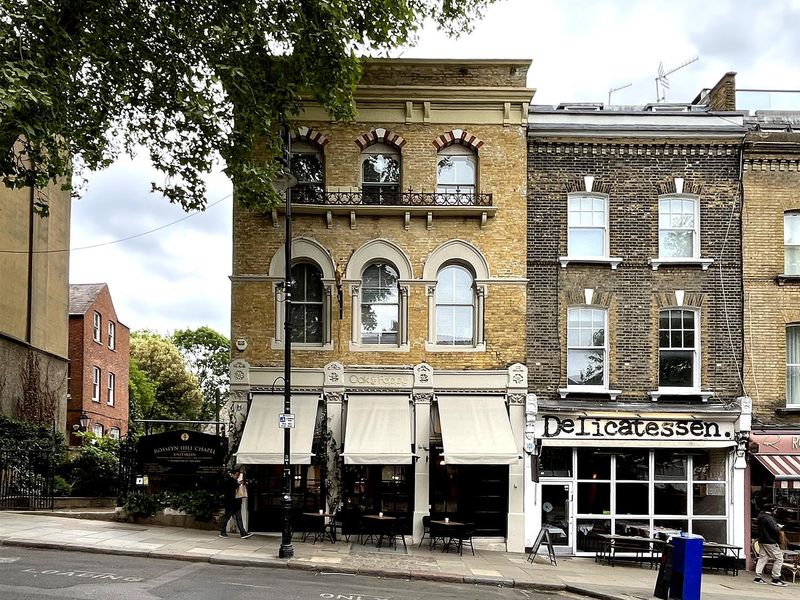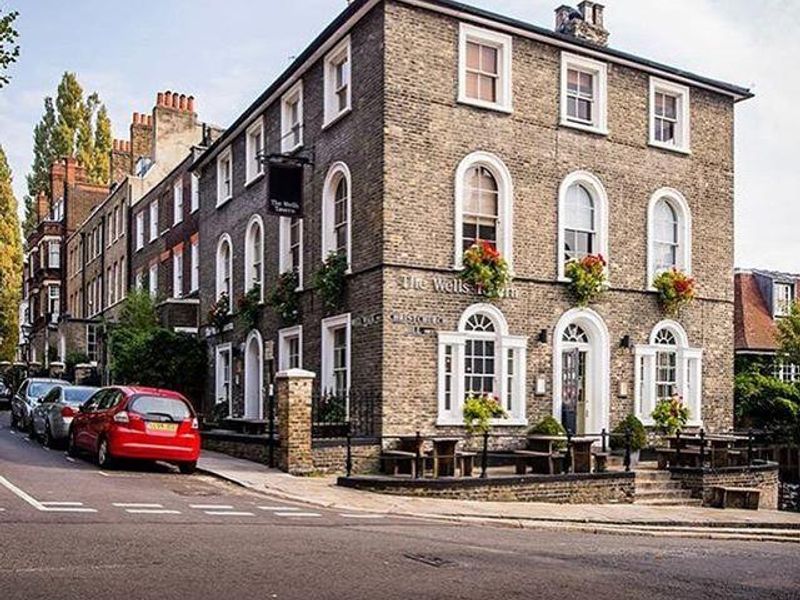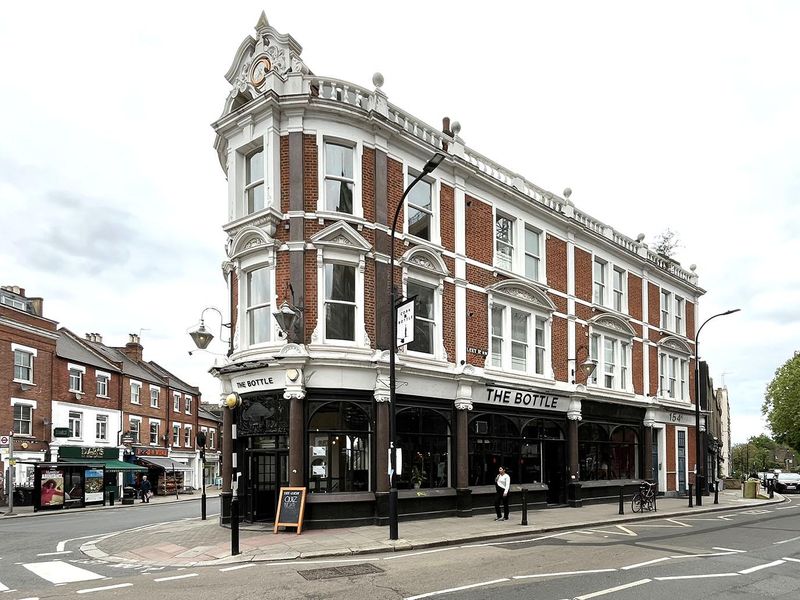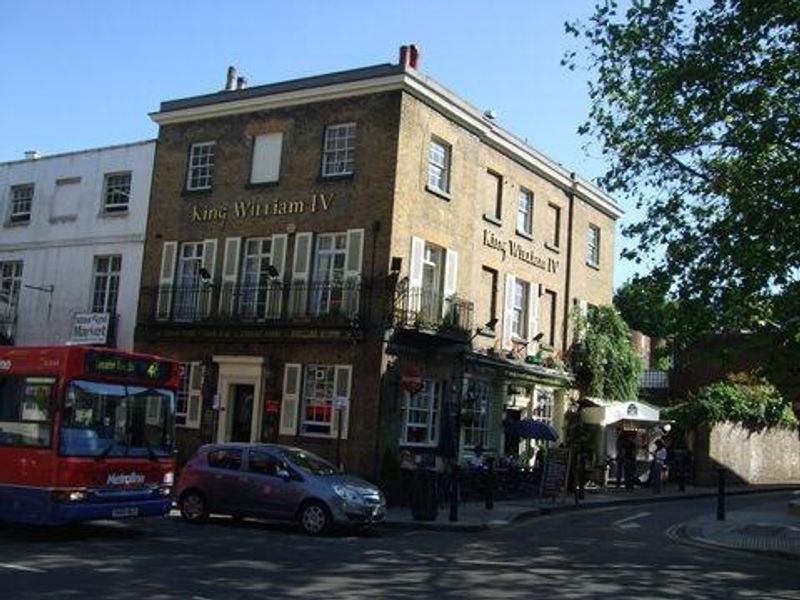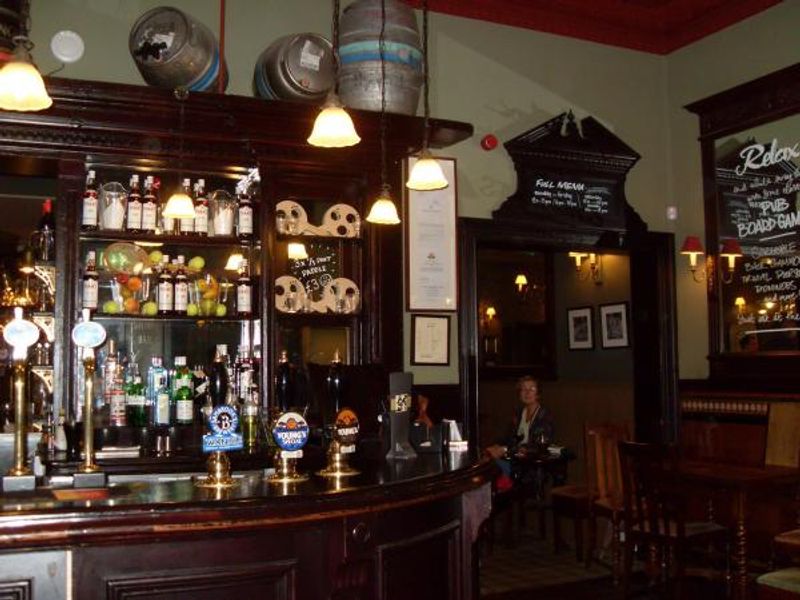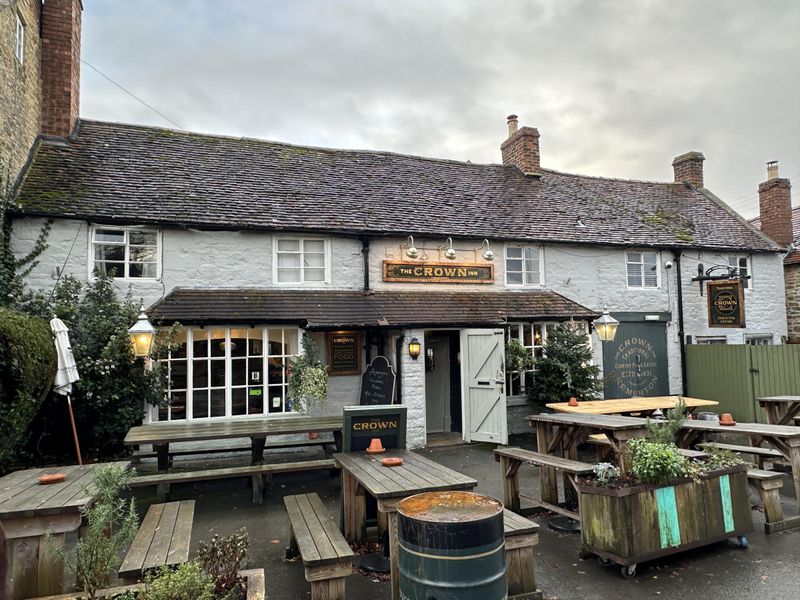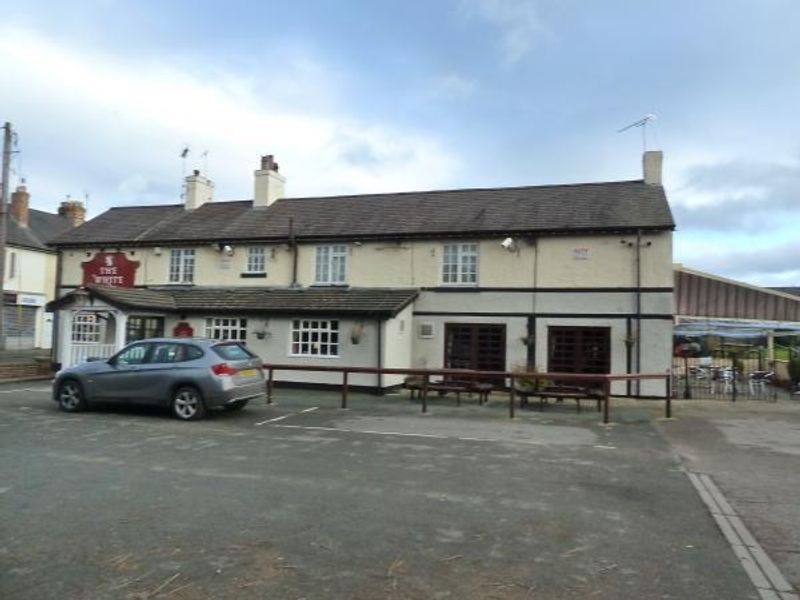Roomy gastro-pub, offering starters, salads, pizzas, pastas, mains and desserts, along with extensive wine list. Very popular with young professionals, it seems. interior still retains some nice features, such as fireplaces, but mainly dominated by track lighting, soft music, upholstered banquettes, wooden tables and chairs, along with recent extension to dining area (which sacrificed garden space in a less than aesthetic manner).
The original Freemasons Arms dated from the 1700s, and was the first stop for the stage-coach from the City of London to the then small, country village of Hampstead. It was built over the River Fleet, as is the present inn, and had a secret 'priest-hole' down to the river.
Today's inn is a rebuild in the early 1930s, the old one being no-longer fit-for-purpose, as the cellars were liable to flood, so the new building stands on concrete foundations 15 ft deep at one end and 10 ft deep the other in order to eliminate this problem.
Until the 1990s, the still large garden had the only extant game of Pell Mell -- from the French Paille Maille meaning "ball and mallet". This game was played in France as early as the13th century, and by the 16th century, it was popular in England known as 'pall-mall' / 'pell-mell'; and it was from this game that croquet developed in the 19th century.
Pell Mell is played along an alley with a round court at one end: the object of the game is to 'throw' a wooden 'bowl' placed on an iron hoop affixed to a long wooden pole, through an upright hoop in the centre of the court. Historians consider that Pell Mell was the game Drake was playing on Plymouth Hoe awaiting the Spanish Armada, and not the game of Bowls as we know it today. Tragically, at some time during the late 1990s, the Pell Mell court was secretly dug up and done away with -- an act of unwarranted vandalism.
The present inn's unique feature is in the basement, where there is a full size 'old English' or 'London' Skittle Alley, now the only one in existence. At the end of the alley are wooden pins to be knocked over by rolling a wooden 'cheese', and is the forerunner to the modern Nine Pin Bowling Alley. The Skittles Alley is run by a Club full details of which can be found at http://londonskittles.co.uk/
During World War Two, the Skittle Alley was used as a night-time air-raid shelter for local residents.
Near neighbours were Sir Roland Penrose, artist, historian and poet, and his wife Lee Miller, the internationally-known war photographer; Edouard Messens, a Belgian artist and writer associated with the Belgian Surrealist movement; and further up in Keats Grove, David Divine DSM,. war correspondent, who in 1940 made three trips in a small boat to rescue allied troops stranded on the beaches of Dunkirk.
More of a dining than a drinking destination. Listed as an Asset of Community Value in Sept 2016. Unless this was renewed it will have expired.





